Our Verdict
A visually stunning showcase of what split, columnar ergonomic keyboards can be like but the very steep price and unnecessary flaws spoil the show.
For
- Fully split, columnar keyboard
- Sublime ergonomics
- RGB lighting that's genuinely useful
- Super software
Against
- Extremely expensive
- Steep learning curve
- Optional tenting kit isn't great
- Optional wireless dongle feels cheap
- Best suited to large hands
PC Gamer's got your back
The very best ergonomic keyboards all share some common characteristics, such as split keyboards, built-in tenting, and key arrangements to minimise finger and wrist stress. They're typically also very expensive as they're custom-made, low-volume sellers for a niche market. But when the Dygma Defy demands an asking price of $609 for a fully-equipped model, expectations are inevitably going to be extremely high.
I try not to have preconceptions when reviewing a new piece of hardware but it's hard to ignore the Defy's full price tag. While it's certainly not the most expensive keyboard I've ever seen, it's significantly more than any I've recently tested—over $180 more than the current price for the MoErgo Glove80, for example.
It's not helped that some of my first impressions weren't especially positive. The sample Dygma sent us has all of the optional extras (wireless connectivity, tenting, RGBW underglow, and replacement keys) and when all lit up, it shouts luxury, but some parts feel extremely cheap. The wireless dongle, which also serves as a hub to connect both sections to a PC via USB cables, is very cheap-feeling and more than a little flimsy.
But let's leave all that aside for the moment and concentrate on what the Dygma Defy is. It's a fully split ergonomic keyboard, with each section constructed from an aluminium key plate and plastic body.
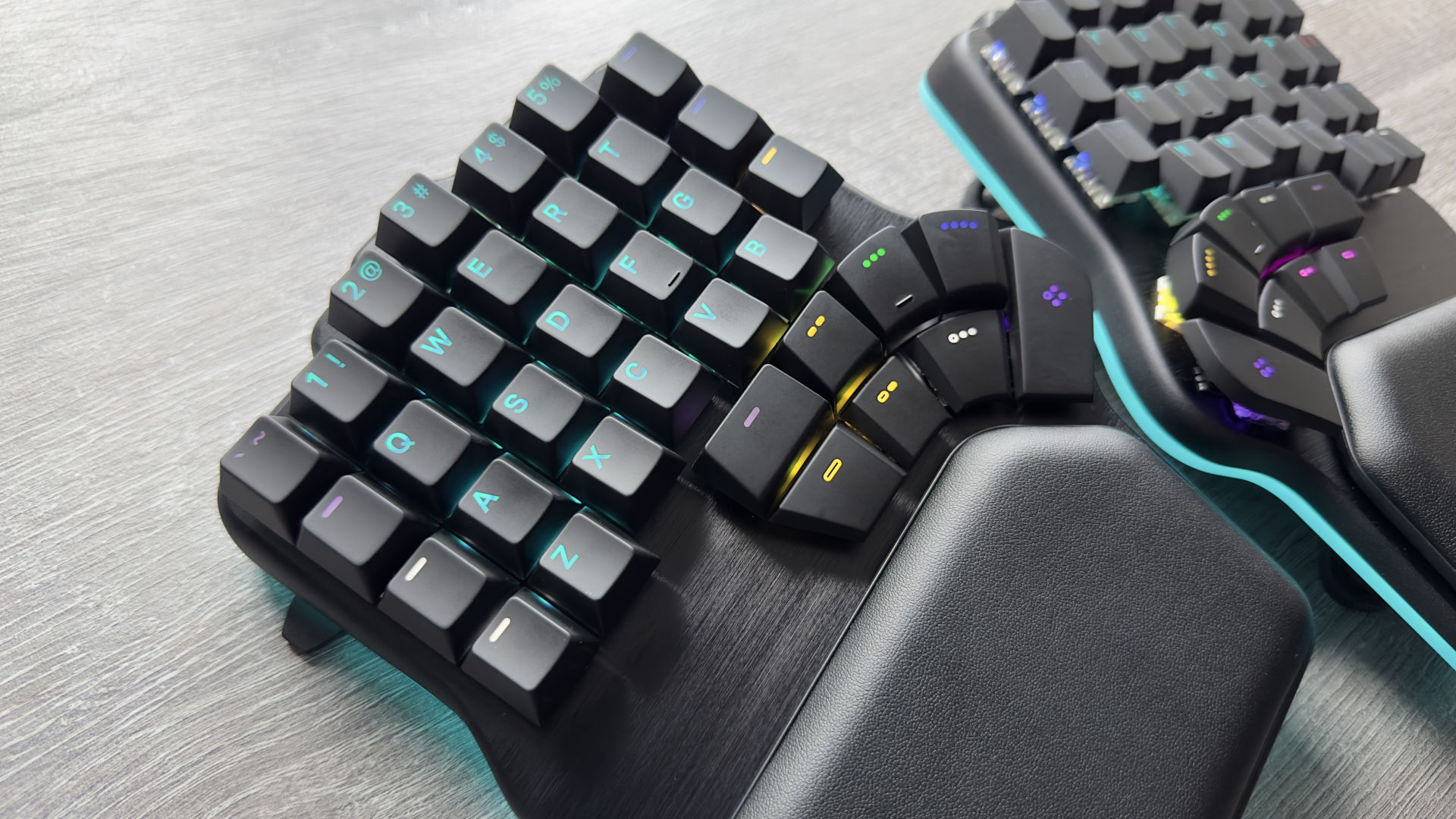
Switches: Gateron G Pro 2.0 Yellow, Kailh Silent Brown, or Kailh Box White
Keys: 80 in total, fully remappable
Connectivity: wired (USB Type-C) / optional wireless (Bluetooth + RF)
Split: fully separate halves, wired or optional wireless connection
Tenting: optional kit, 5 to 60 degrees
Tilting: optional kit, 5 or 10 degrees reverse
Lighting: RGBW per-key backlighting, optional underglow LEDs
Backlighting: per-key RGB
Media controls: shortcuts via alternate key mode
Weight: 1 kg / 2.2 lbs
Price: $369 (base price)
The build quality feels very solid and I especially like the fact Dygma sells the Defy with a choice of three different switches (our sample has Kailh Silent Brown and a further six are available at extra cost). Getting the right typing experience for you shouldn't be a problem.
In the same way that all split, columnar (aka ortho-linear) ergonomic keyboards require dedication and persistence to adapt to, the Dygma Defy has grown on me over time. In fact, I'd go as far as to say that this is potentially the best ergonomic keyboard I've ever used. I say potentially, though, because as things currently stand, I can't ignore the negative aspects of the Defy, despite its genuine positives.
I'm getting ahead of myself so let's start with the basics. The Dygma Defy uses a columnar arrangement for the primary keys and thumb clusters for frequently used keys to reduce finger movement.
The latter takes some getting used to and the fact that each cluster houses eight keys makes them very fiddly to use, especially compared to the MoErgo Glove80 and ZSA Moonlander.
However, one nice aspect of the Defy comes to the rescue here. The laser-etched ABS keycaps in the thumb clusters sport 'spy holes' to allow the per-key RGBW lighting to shine through, and once you've got used to what each key does, it becomes very easy to check where your thumbs should be aiming for.
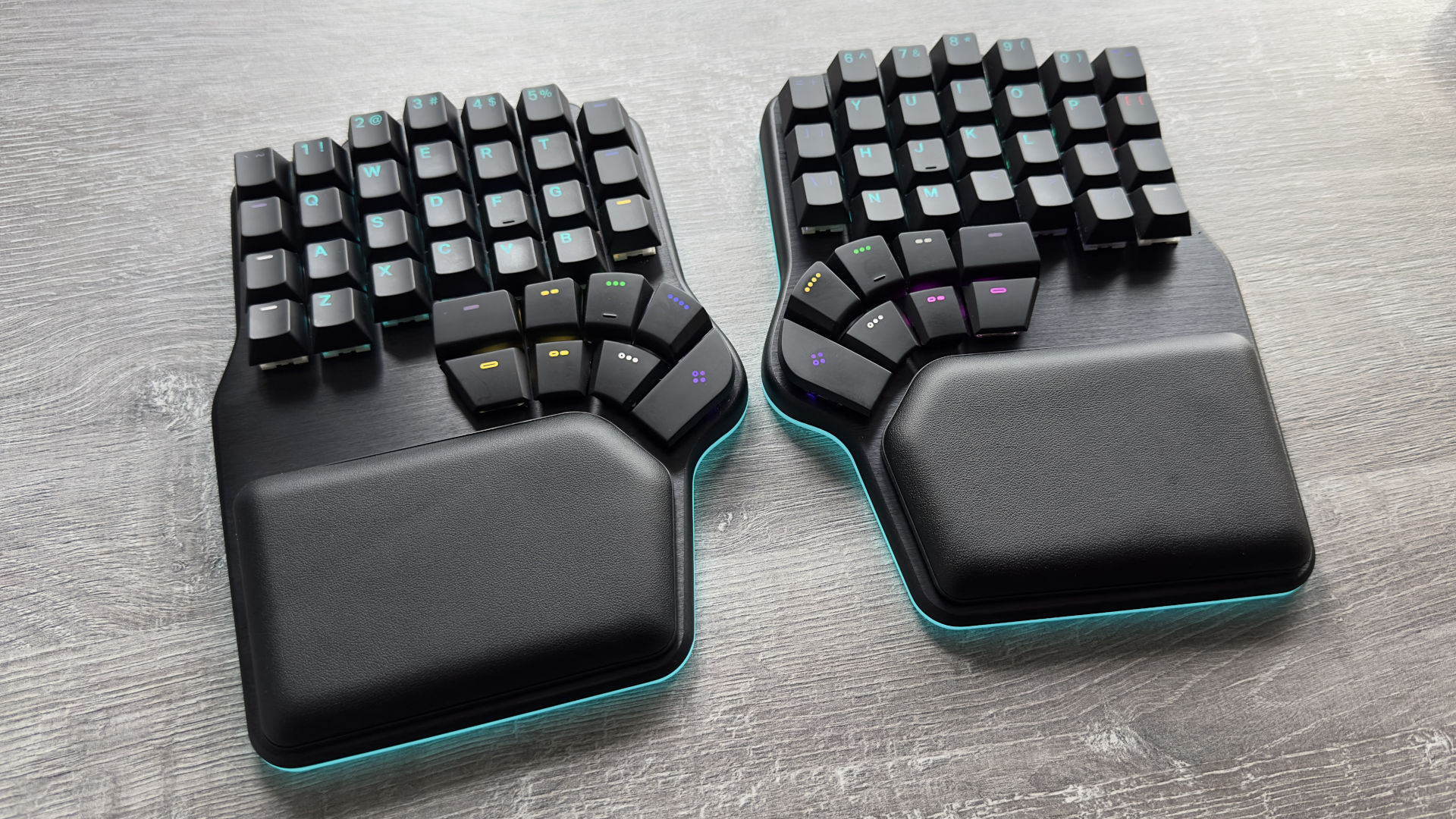

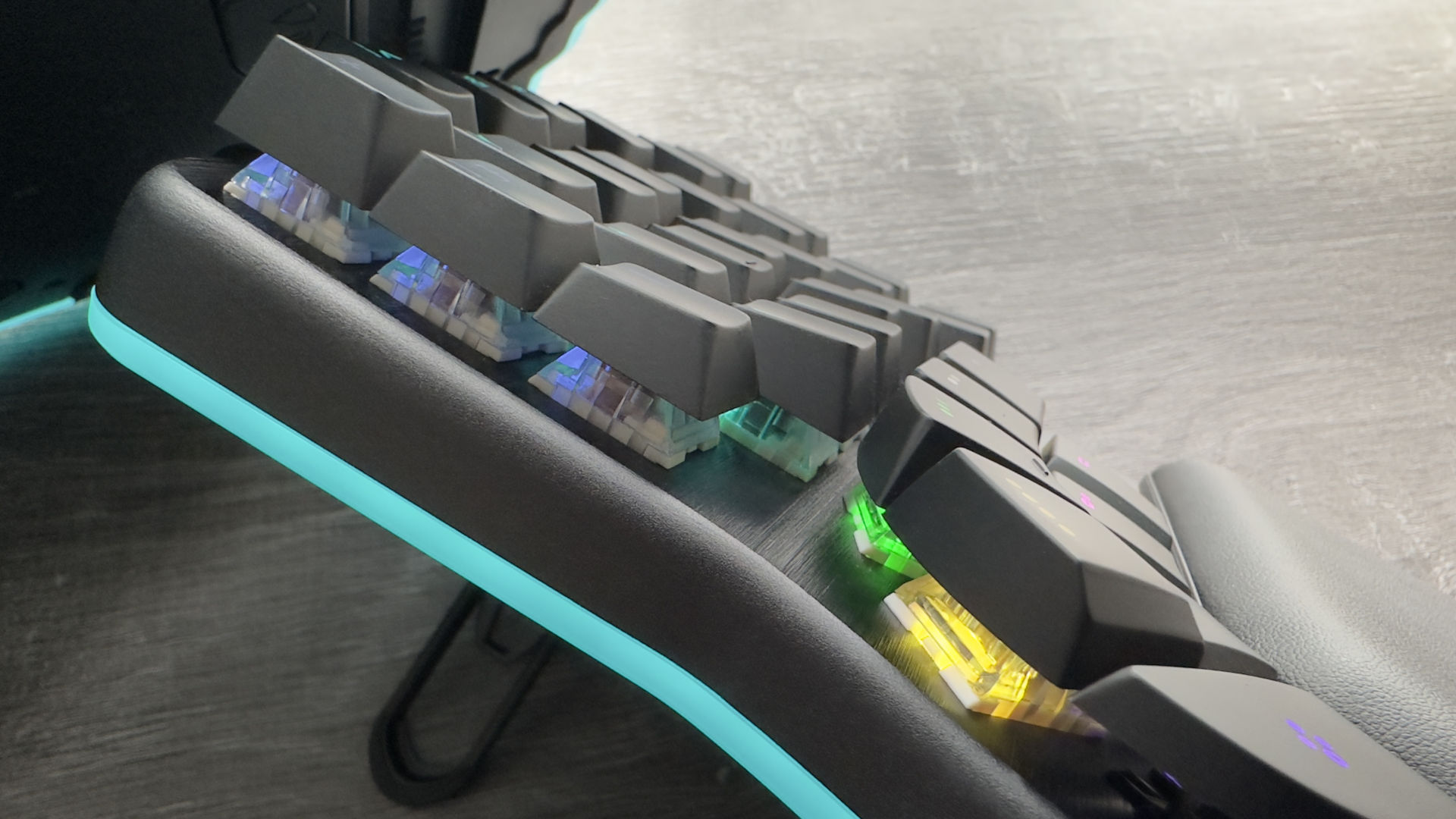
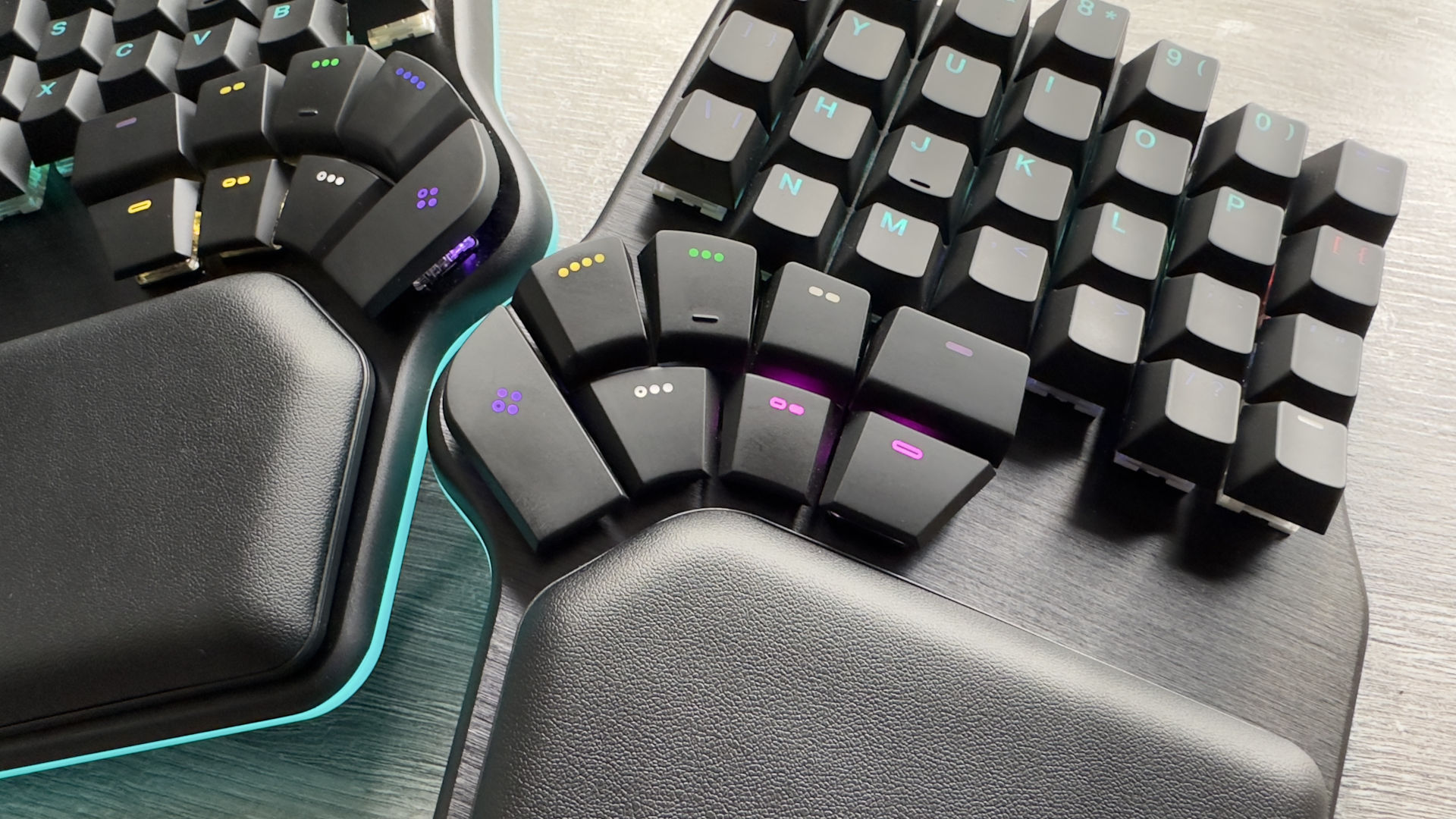
By default, the thumb keys are lit with different colours and compared to the Glove80, for example, the Dygma Defy is easier to pick up and use. That said, if you've never typed on a split, columnar keyboard before, you're going to be facing a very steep learning curve, especially if you've been touch typing on a standard layout for years.
For sheer typing comfort, a fully ergonomic arrangement can't be beat—but it's certainly not for everyone.
A critical component of such ergonomics is the ability to tent the keys. This involves raising the innermost keys to allow your wrists to stay in a more natural, relaxed position. Where the Glove80 and Moonlander come with built-in, almost infinitely adjustable tenting, Dygma has this as an $80 optional extra and I have to say it's not the best system I've ever experienced.
It's very easy to flick out and configure to one of the eight different angles (5° through to 60°), but I never felt 100% comfortable using it and I always use tenting wherever I can. Without the luxurious wrist pads in place, the sections aren't completely stable, even at low tenting angles. That's because resting one's wrists on the keyboards makes the top lift ever so slightly and the tenting legs require weight to hold in place.
That issue disappears once you add the magnetic wrist pads but the fact that the tenting system can't be locked in place not only reduces stability, but it also means that if you move the keyboard about, there's a risk of it all coming loose. For $80, I'd want something a lot more robust.

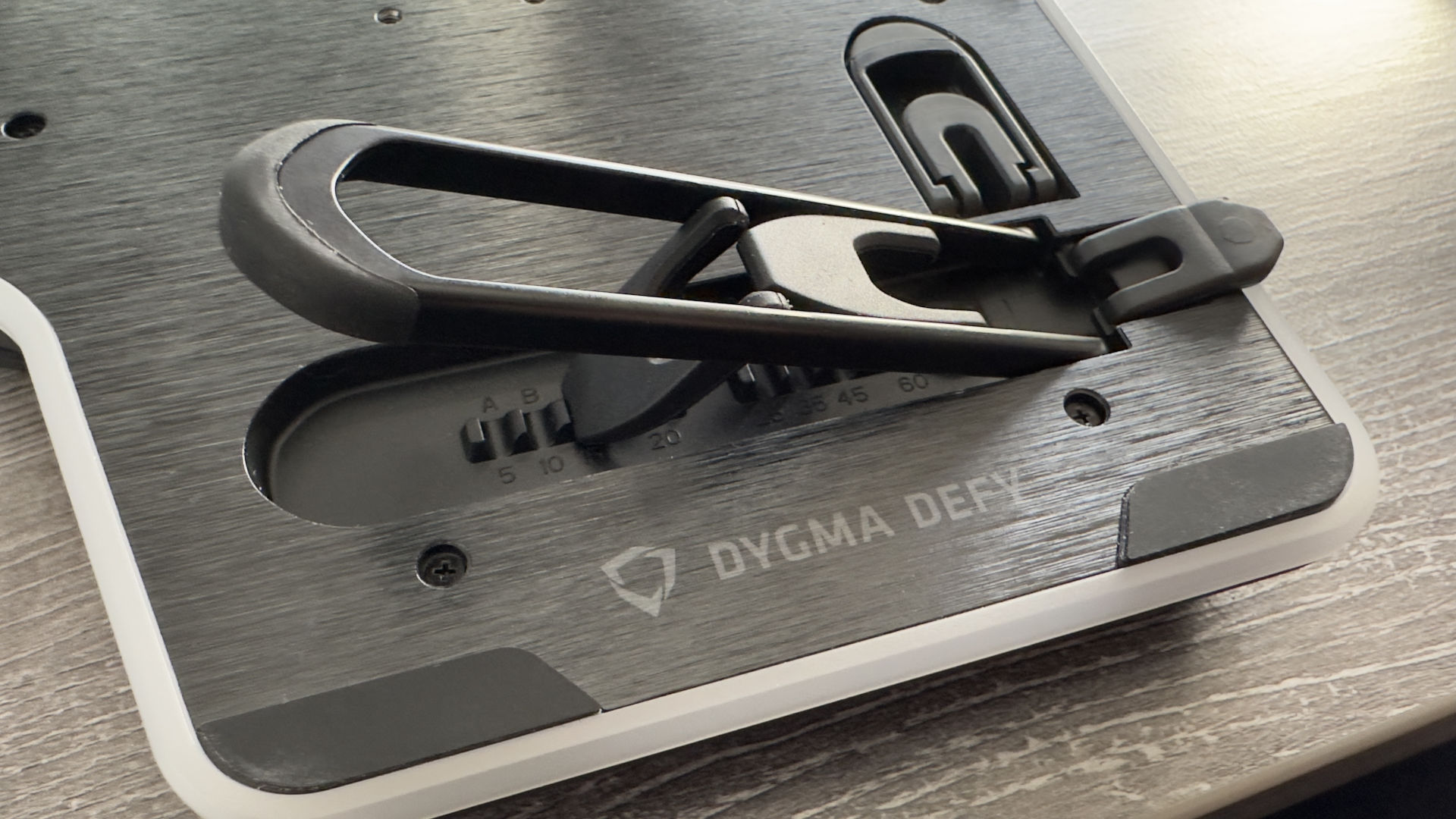
And speaking of robustness, the dongle that acts as the Bluetooth and RF receiver, as well as a USB splitter, feels very flimsy as I've already mentioned. Wireless connectivity is another optional extra ($90 for this one) and like the tenting system, it's a rather clunky affair.
To use the Defy in Bluetooth mode, the dongle has to be inserted into the left-hand keyboard, and a wireless-mode switch activated on both parts. However, if you want to go with the low-latency RF connection, the dongle has to attach to your PC via an included (and rather stiff) USB Type-C cable (a Type-C-to-A adapter is also in the box).
✅ You want full ergo: Split, ortho-linear keyboards are a delight for your hands, wrists, and shoulders.
✅ You like useful RGB: The per-key lighting makes it easy to figure out what the thumb keys do.
❌ You value your wallet: $539 for the wireless tented version, with no underglow LEDs, is a huge sum of money for a keyboard.
❌ You want quality everywhere: The wireless dongle and tenting kit feel cheap and flimsy.
❌ You have small hands: The multitude of thumb keys and broad main sections are best suited to large mitts.
Pretty much every other wireless keyboard out there handles all of this by using a simple and small USB dongle for the RF connection, and everything Bluetooth is managed by an internal component. Dygma's solution feels like an overly cumbersome way of doing it all and at $90, it's something that should be a lot slicker.
During my time with the Defy, I experienced a few glitches connecting to my PC via the USB Type-C cables. More than once it refused to recognise that it was connected and the only way around this was to connect the Defy via Bluetooth or RF, and then plug in the cables.
It's not all doom and gloom, though. For configuring keys, macros, and lighting, Dygma's Bazecor open-source software is really good—packed with features and refreshingly easy to use; I had the Defy all configured to exactly how I wanted it within a few minutes.
Other keyboard vendors should take a good look at Dygma's app and take some furious notes. The fact that Dygma identifies it as being still in beta is especially impressive.
For all its strengths and shortcomings, the Defy wouldn't be much of a keyboard if it wasn't nice to use, especially as a daily driver. Having spent several weeks with it, I have to say that while it's really nice to use, it's not quite as good as the ZSA Moonlander to type on but only because it's not especially suitable for smaller hands like mine.
The whole point of an ergonomic keyboard is to minimise finger and hand movement but I had to reach about a little too much for my liking.

However, I did find it much better to game on than the Glove80 and Moonlander, and it's down to the surfeit of keys in the thumb clusters. While having an excess of them does mean your thumb gets more of a workout than it would like, it does make it easier to remap them to be more accessible in games.
You're still going to be better off gaming with a traditional layout or something like the Kinesis Gaming FreeStyle Edge, but it does help make the Defy more suitable for games.
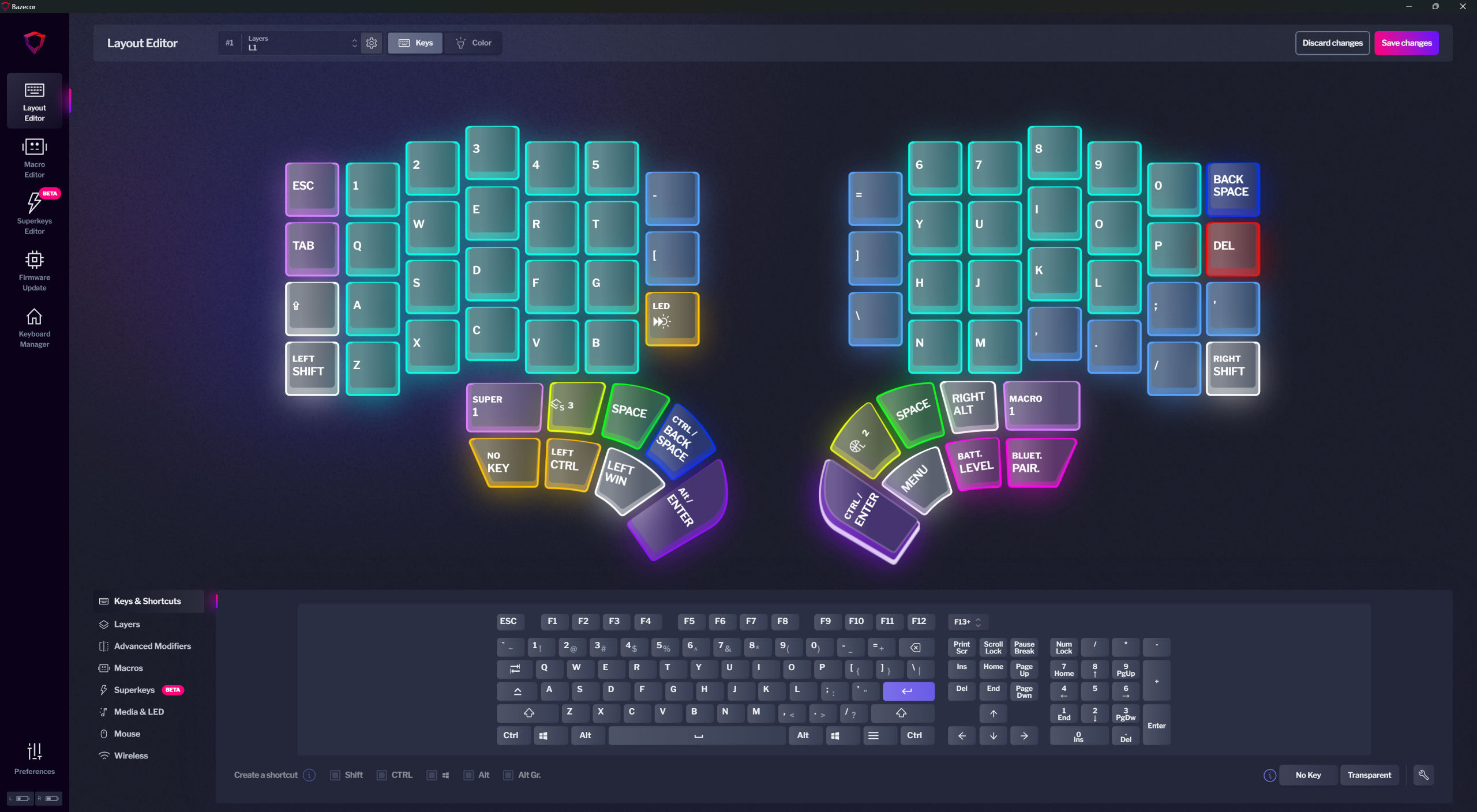
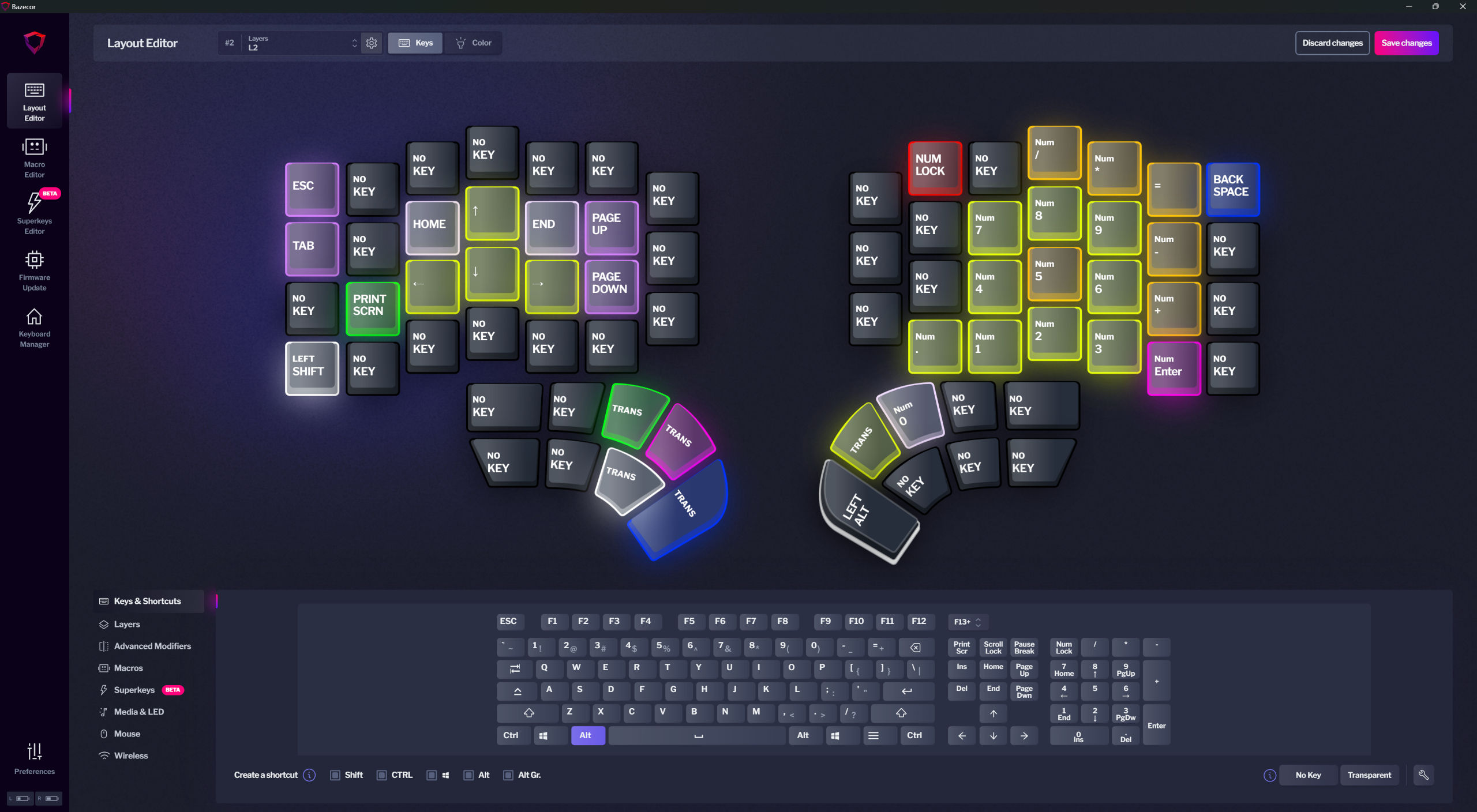
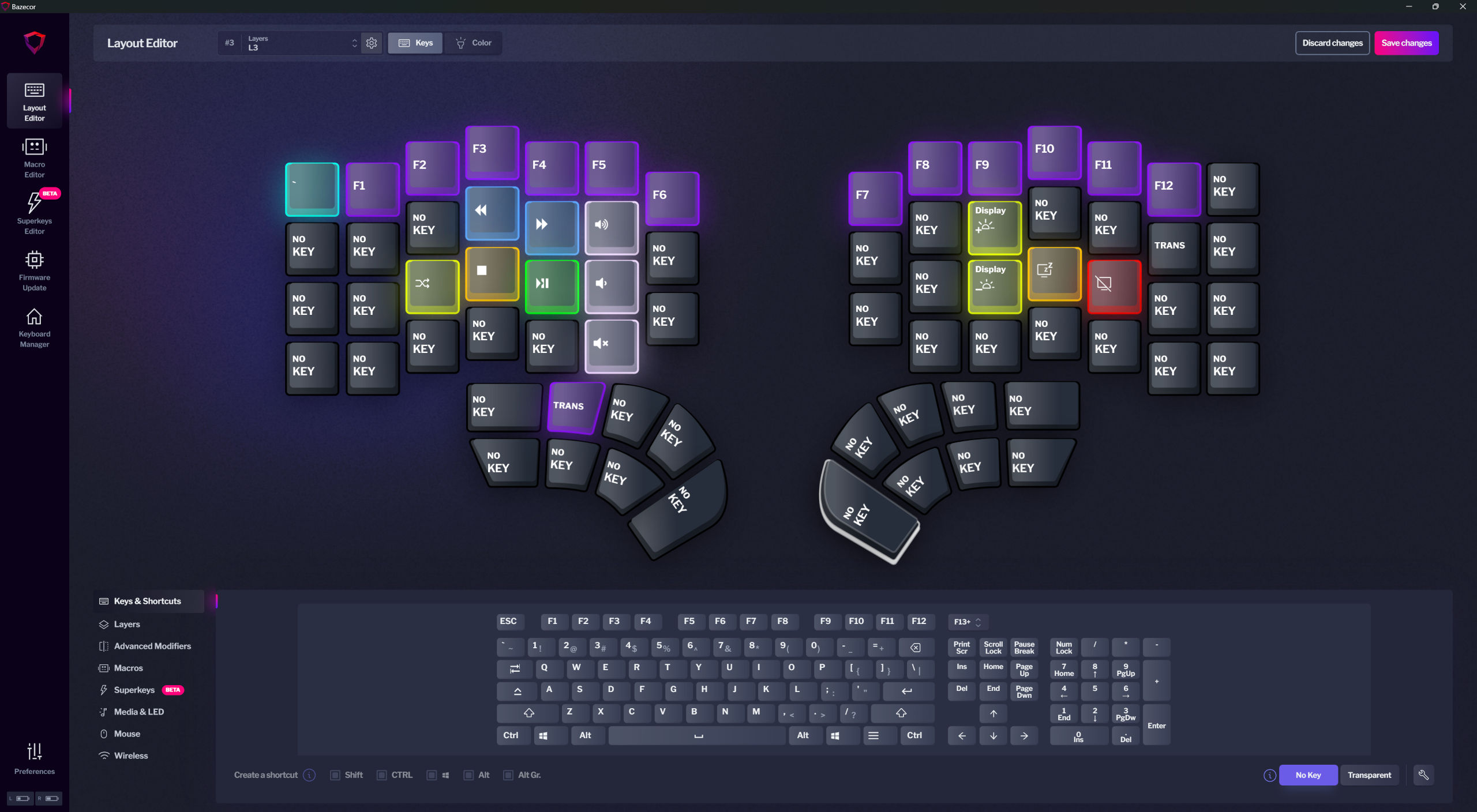


Dygma has got an awful right with the Defy—the magnetically attached wrist pads, the lighting system, the travel case and the software, to name a few—but if I had $370 to spend on a boutique ergonomic keyboard, I don't think I'd choose one that had no tenting or wireless connectivity. The idea of having to fork out an additional $170 just for those really takes the shine off the strengths of the Defy.
And if you want the Defy to come with the very pretty RGBW underglow LEDs, it's another $70. Add all of that together and you're looking at a dollar's worth of change from $610. At this price, you're going to want near-perfection and the Defy isn't there, though I struggle to see what keyboard is ever going to be worth that sum of money.
It has the potential to be one of the very best ergonomic keyboards, though, and if Dygma plans on doing a Defy 2, with integrated wireless connectivity and tenting, both as solid as the rest of the keyboard, then it could be onto a real winner. As things currently stand, you're shelling out an awful lot of money for something that's a risk—the Dygma Defy could be the ergo keyboard for you, but it could also be an expensive mistake.
A visually stunning showcase of what split, columnar ergonomic keyboards can be like but the very steep price and unnecessary flaws spoil the show.

Nick, gaming, and computers all first met in 1981, with the love affair starting on a Sinclair ZX81 in kit form and a book on ZX Basic. He ended up becoming a physics and IT teacher, but by the late 1990s decided it was time to cut his teeth writing for a long defunct UK tech site. He went on to do the same at Madonion, helping to write the help files for 3DMark and PCMark. After a short stint working at Beyond3D.com, Nick joined Futuremark (MadOnion rebranded) full-time, as editor-in-chief for its gaming and hardware section, YouGamers. After the site shutdown, he became an engineering and computing lecturer for many years, but missed the writing bug. Cue four years at TechSpot.com and over 100 long articles on anything and everything. He freely admits to being far too obsessed with GPUs and open world grindy RPGs, but who isn't these days?

